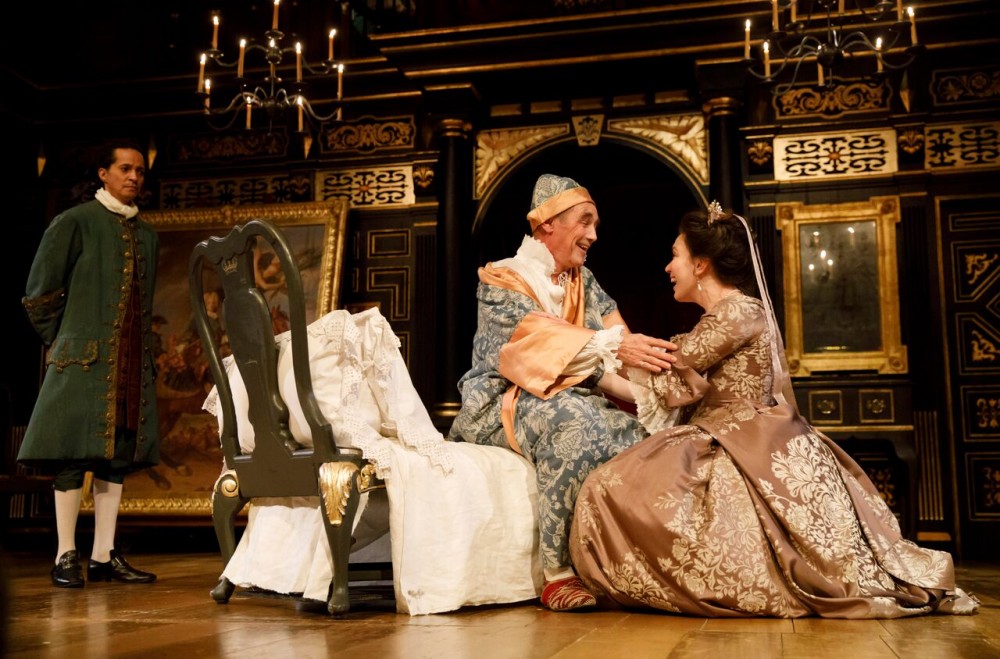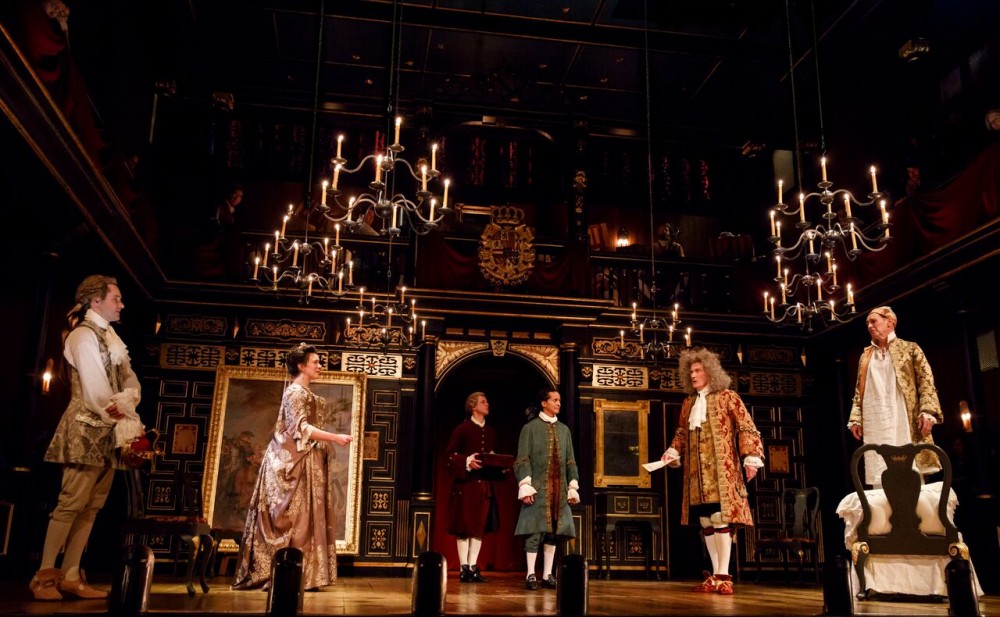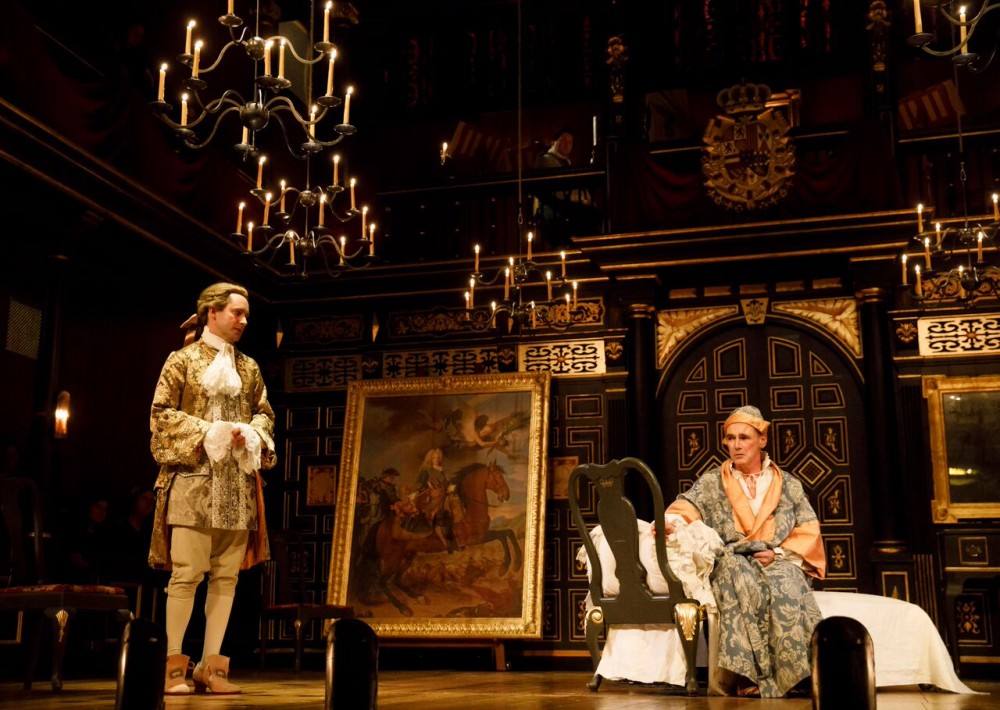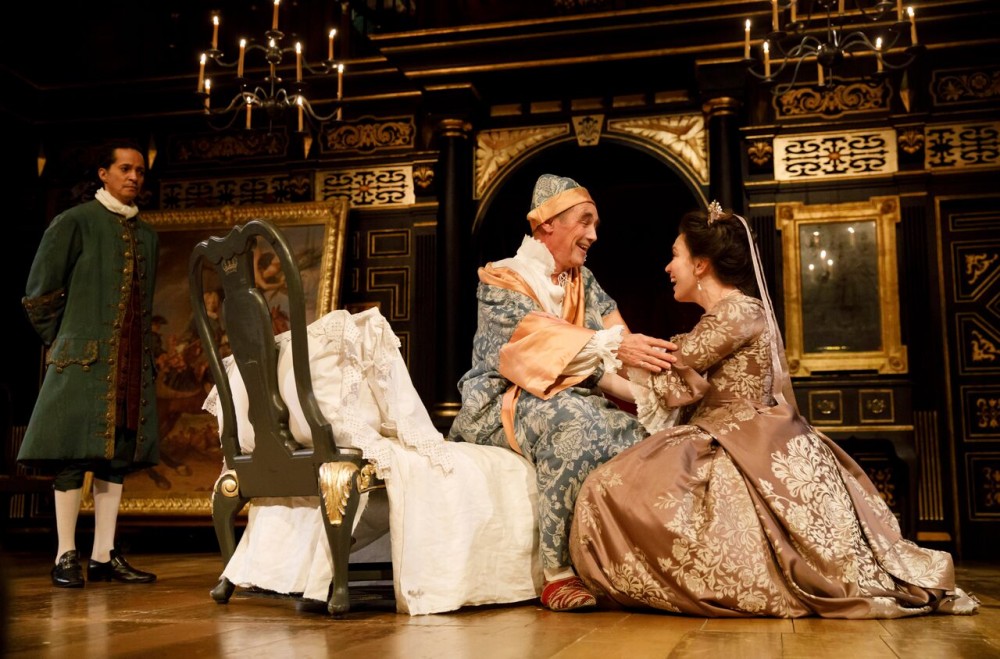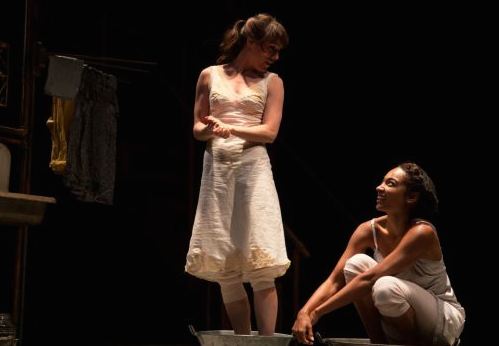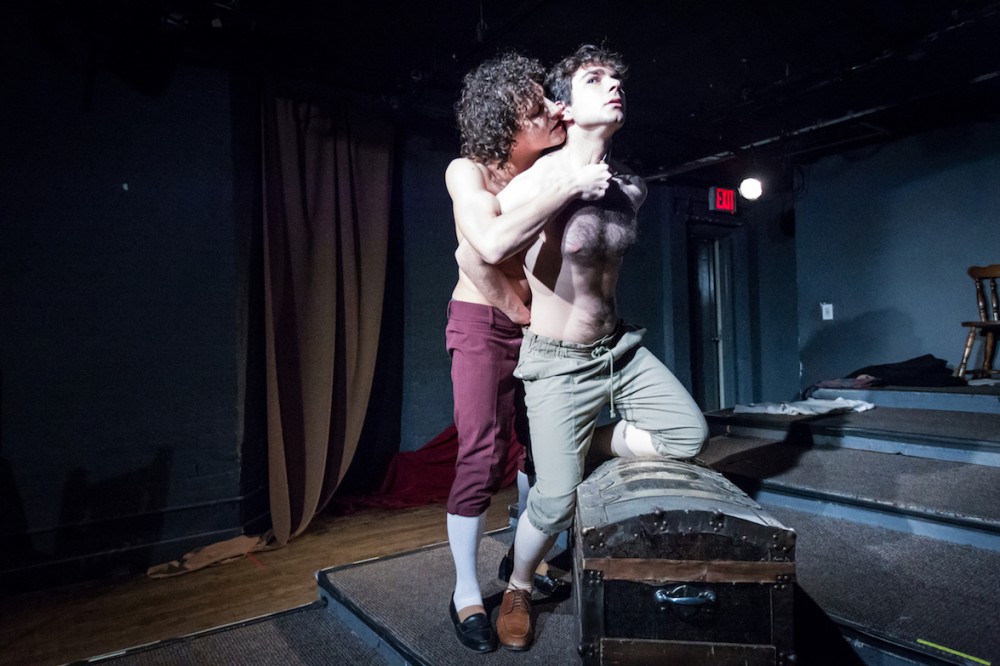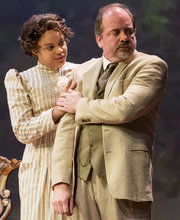by Michael Bracken
It should come as no surprise that Tony and Academy Award winner Mark Rylance delivers yet another virtuoso performance as Philippe V in Claire van Kampen’s Farinelli and the King at the Belasco Theatre. Confused, afraid, and not quite able to make sense of the world, his Philippe possesses a cutting wit, which he’s not above using as a sword to lash out at his queen, Isabella (a stalwart Melody Grove).
His is a tortured soul, and Rylance finds his soft spots, conveying his hopelessness and bewilderment yet never forgetting Philippe’s royal pedigree. His voice is plaintive, his manner defeated, but he’s still the King of Spain.
For reasons that seem to come out of thin air, Isabella decides that having a singer among the regal retinue will help buoy up Philippe’s spirits. She’s right. Farinelli (Sam Crane), an operatic sensation castrated at the age of twelve, joins the royal household and Philippe responds immediately. He continues to have a somewhat skewed worldview, but his despair dissipates.
While Crane plays the walking and talking Farinelli, the singing Farinelli is embodied by a pair of vocalists (Iestyn Davies and James Hall). They appear singly – strictly one at a time. Dressed like Crane, one of them will position himself next to Crane when it’s time for an aria. Their voices approximate a mezzo-soprano, but with slightly more body, slightly more weight. Their sound is thrilling yet just a little off-putting. Its blend of male and female is unexpected, possibly unsettling.
Philippe’s personal struggle is mirrored by his political strife. Don Sebastian de la Cuadra (Edward Peel), more concerned about the monarchy than the monarch, is always on Philippe’s tail, hungry for enough material to get him to abdicate. Even when Philippe has brightened under Farinelli’s influence, De La Cuadra lingers in the wings, trying to get the king, who has taken refuge with Farinelli and Isabella in the forest, to return to Madrid and behave like a king. Peel makes the most of De La Cuadra. He’s oily and prickly and not someone you’d want to touch.
Farinelli starts slowly but finds its footing a few scenes in, when Farinelli and the king meet for the first time. Even after it’s up and running, it slips into a mild torpor here and there. As good as Rylance is, Philippe’s madness can be just a little too cute, peppered with wit that doesn’t feel organic. At times, he calls to mind a Shakespearean fool – not sure that’s the intended takeaway.
Director John Dove hasn’t determined how to even out the bumps in Van Kampen’s script, but his production has no bumps in the design arena. Paul Russell’s lighting starts with an abundance of candlelight, as chandeliers, sconces, and candelabra can be seen all over the stage. While he supplements with electric lighting, the feeling of the candles predominates. The light is soft. The stage is darker than a Broadway stage normally is, but it doesn’t seem dark at all.
Red velvet and gold dominate the set (design by Jonathan Fensom), a single large room that serves as an all-purpose venue. Three bancs of two-deep benches, inhabited by audience members, are placed around, above, and a little below it. Balconies are on three sides. The candles make it all the more elegant.
If Farinelli and the King gets bogged down now and then – and it does – it also has its memorable elements, including its impeccable sense of time and place. Individual scenes and moments stay with you, like the scene where Farinelli first meets Philippe. While not necessarily a high-octane scene, it feels like one because of the energy Rylance and Crane generate. And the cavalcade of arias and snippets of arias is a bonus feature not to be overlooked.
Photos: Joan Marcus
Through March 25th at the Belasco Theater, 111 W. 44th Street. http://www.farinelliandthekingbroadway.com/ . Two hours twenty minutes with one intermission.


